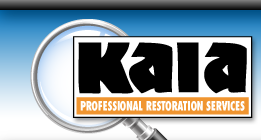EQUIPMENT
We own a huge inventory of restorative drying equipment and tools manufactured by Dri-Eaz Products, Inc. a leader in the industry known for using the most innovative and advanced technology.
Airmovers:
Provides static pressure/air movement; basically, "kicks up" excess moisture.
Dehumidifiers, refrigerant:
Speeds up drying process by "removing" the moisture kicked up by the airmovers. We have various models that removal between 16.5 to 30 gallons of water a day.
Air Scrubber / negative air machines:
Removes potentially harmful particulates in an indoor environment or contained work area during remediation; negative air, along with the proper containment, is crucial during mold remediation.
Moisture Sensors:
Detects moisture, particularly in carpets/padding.
Penetrating and Non-Penetrating Moisture Meters/Probes:
Provides readings of moisture content, particularly of walls, ceilings, flooring, concrete, cinderblock. etc.
Choosing which Items to Use
Choosing the equipment you will use to dry a flooded area is not a matter of chance. The situation must be carefully assessed to know which kind is best suited for it. Take note that a sump pump will need an exit point in order to remove the water. Without it, the pump will not work properly. Remember that when a area floods, that logically entails that the drainages are rendered useless. Most likely, you will need to attach a hose to the pump so you can lead the water out of your home.
Controlling Humidity Levels
The first step to successfully control humidity levels is to measure them and detect unusual readings. It is important to measure humidity levels at least once every 3 months to keep track of any changes that may occur due to weather changes. Use a digital humidity meter (hygrometer).
If humidity levels are higher than 45% your basement is most likely to suffer from mold and you must take action to eliminate moisture sources and lower humidity levels.
Antimicrobials/Biocides: EPA-approved chemical agents to inhibit or kill existing microbes (naturally, our technicians always identify and address the issue of existing chemical sensitivity and potential allergic response prior to application).
Needless to say, each and every restoration/remediation situation is different; no two are alike. By using a combination of high-tech restorative drying equipment, psychrometry, "creative" and common-sense tactics, and dictated by conscientiousness, we use the art and science of restorative drying to great advantage. In effect, each job is done efficiently and thoroughly, which helps to keep costs down all around for our customers.


